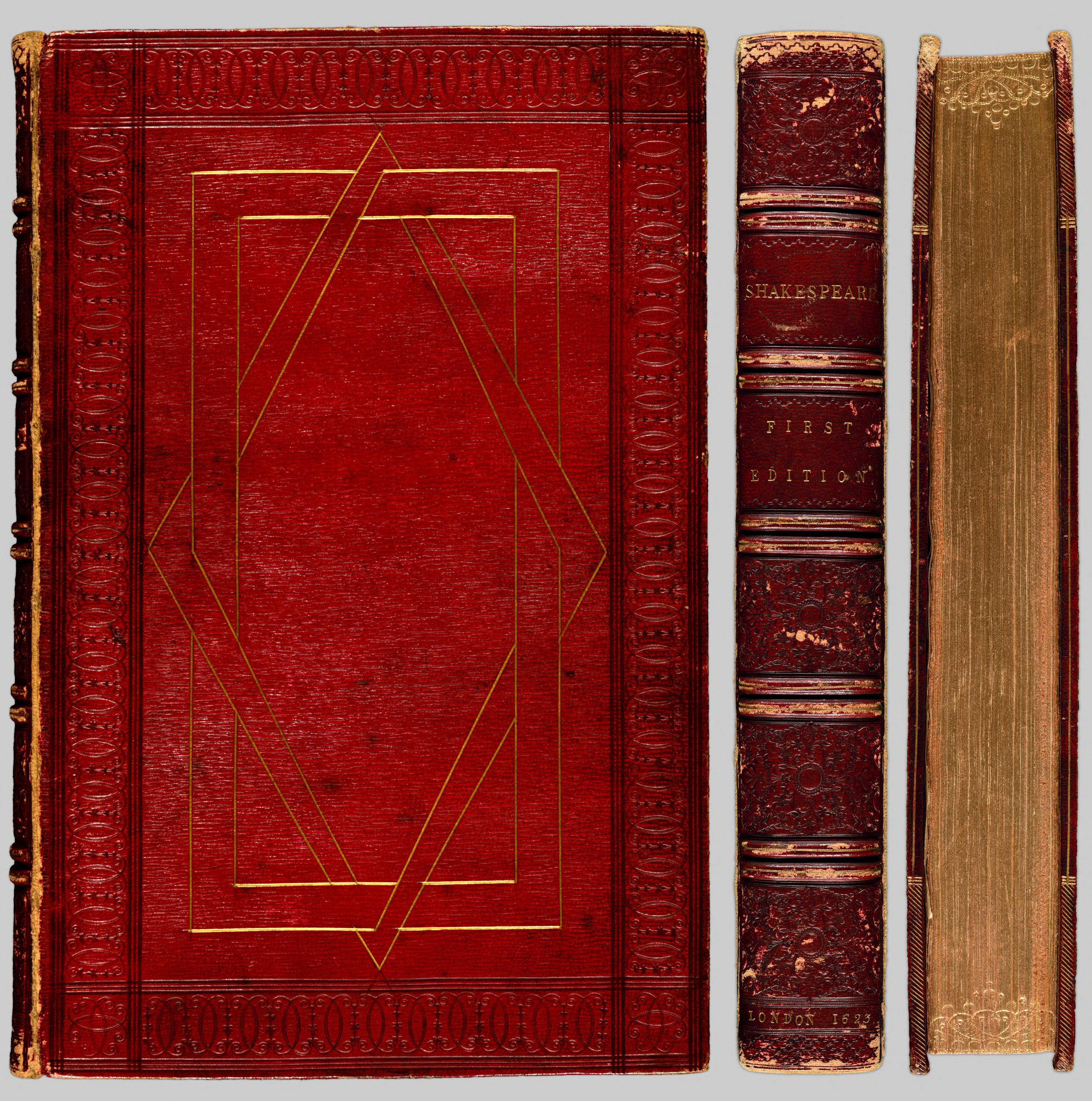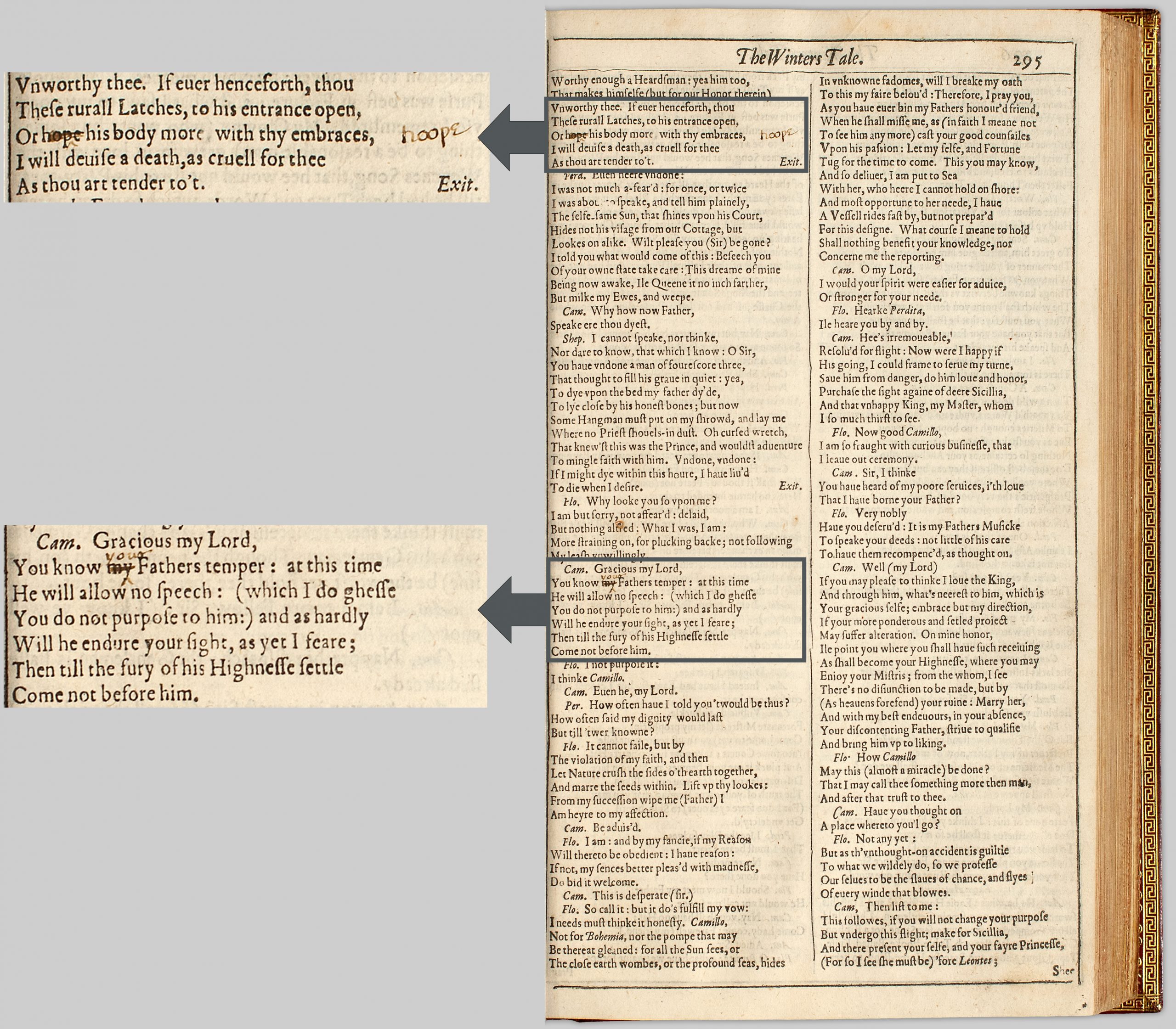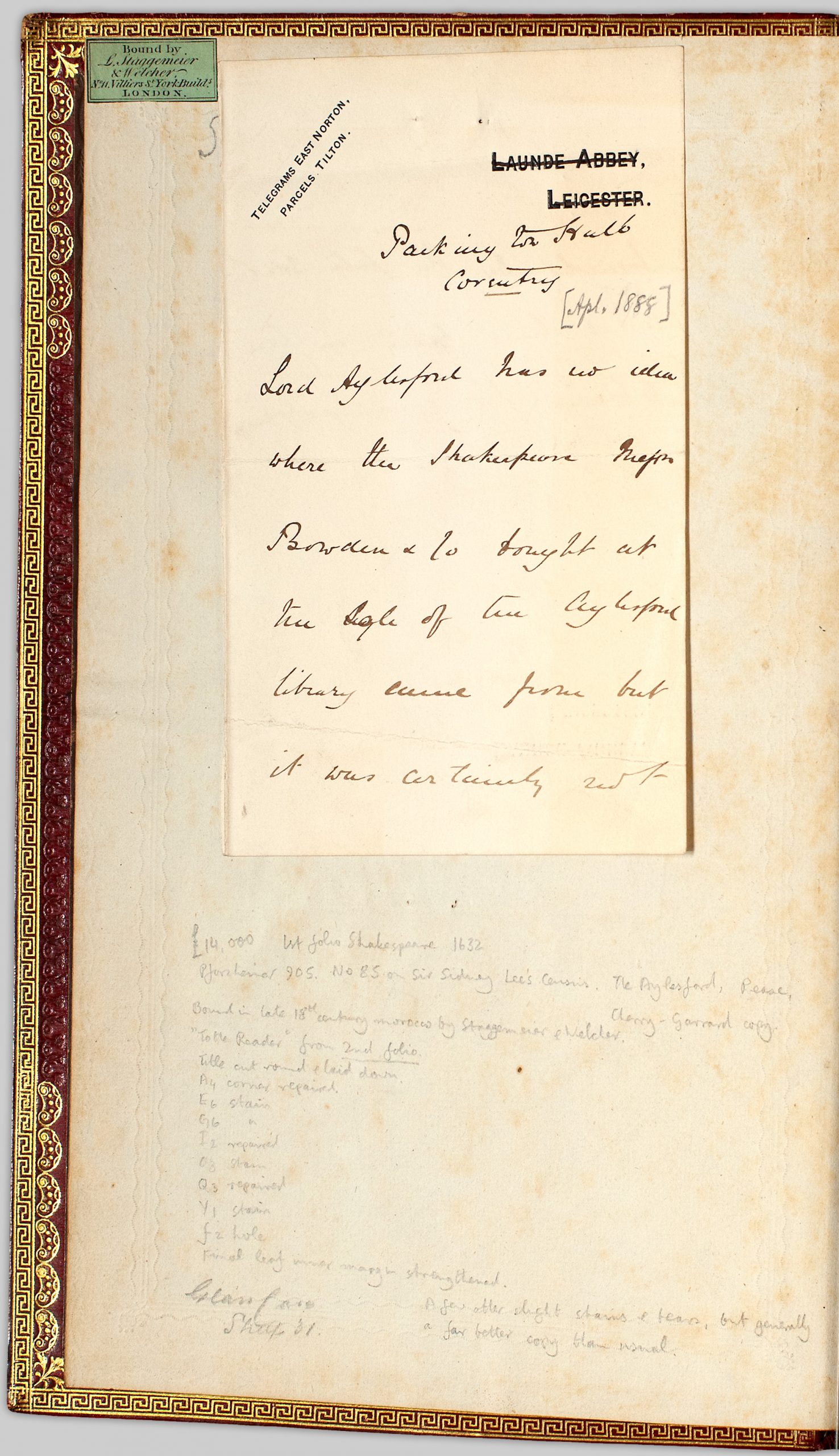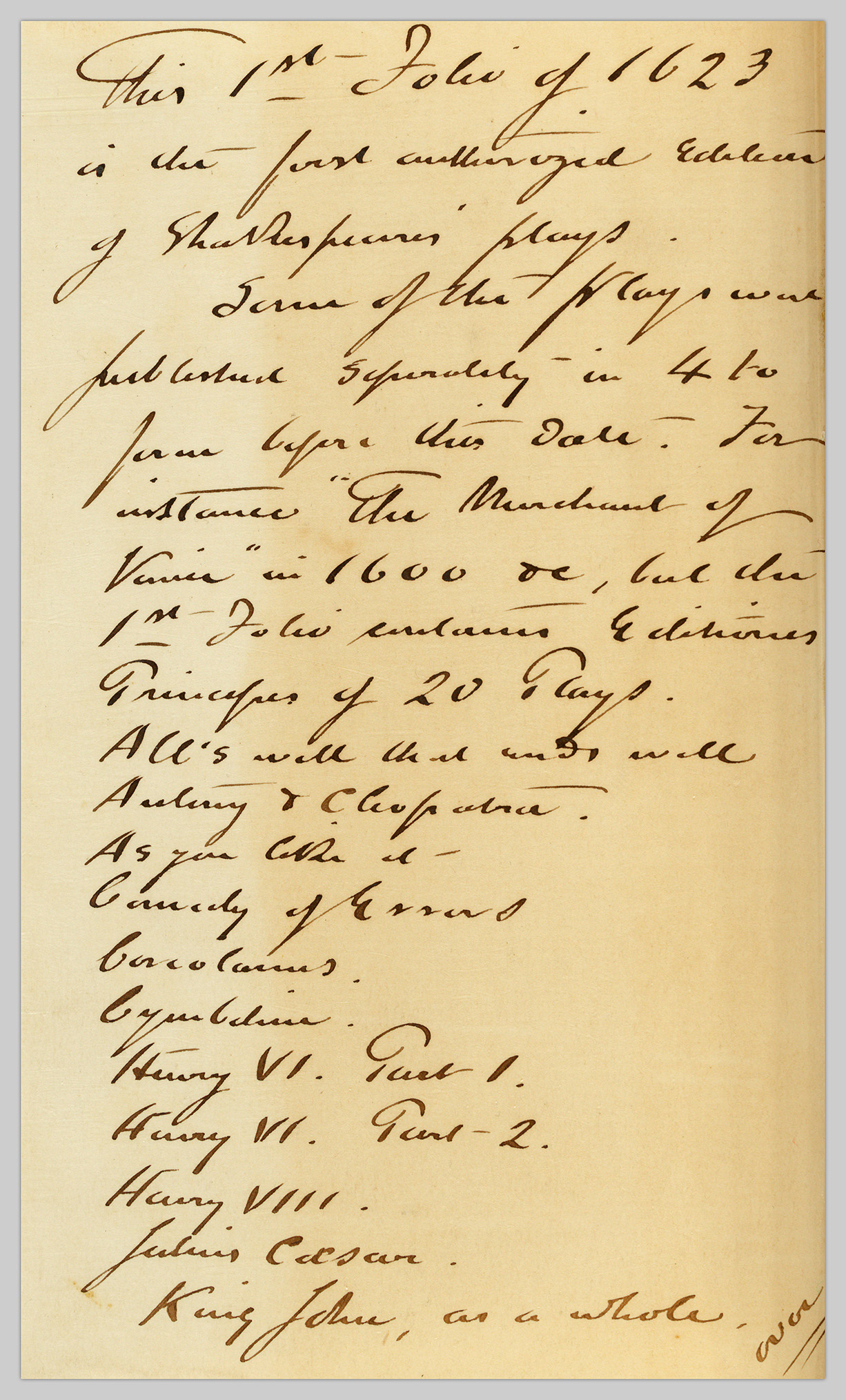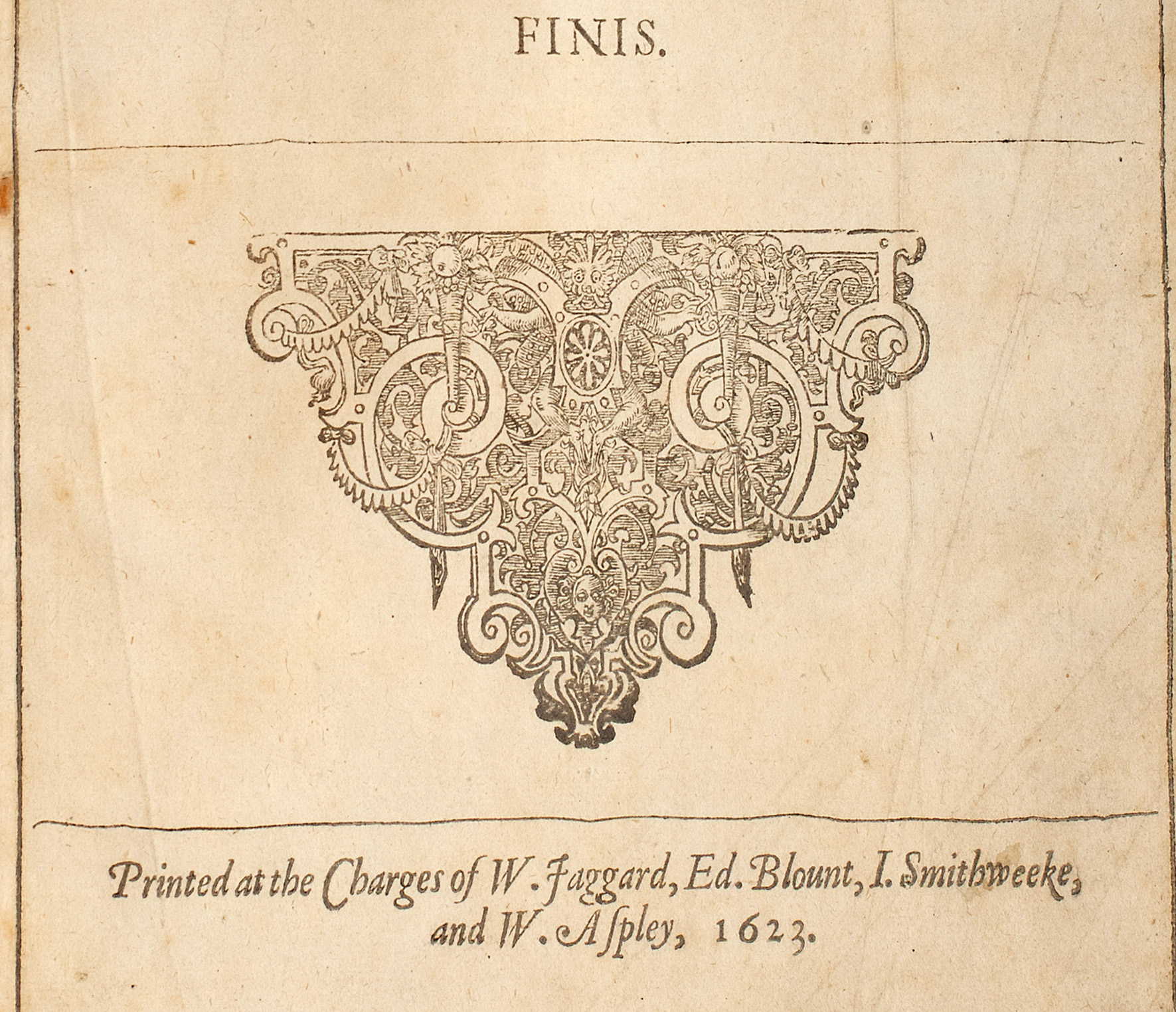This week, as a celebration of William Shakespeare’s birthday (April 23, 1564), the Digitization Centre would like to share some of the experiences of digitizing one of the extremely rare books in the UBC Library’s collections: the first edition of “William Shakespeare’s Comedies, Histories, & Tragedies” published in 1623. We asked one of our graduate students, Natalia Wilczek, who intimately worked with the project’s digital collection to share her experience, including some of the challenges encountered, and personal insights she had working on the project.
This blog was written by Natalia Wilczek, historian, librarian, a graduate student at the UBC School of Information, and Digital Preservation Assistant at the Digitization Centre.
O wonderful, wonderful, and most wonderful
wonderful, and yet again wonderful
“As You Like It”, Act III, Scene II
One of the greatest advantages of working at the Digitization Centre is the opportunity to engage with rare historical materials that often reveal a forgotten reality of the past. This includes literary works, which are a part of that reality and serve as evidence of the development of language, society, and literature.
Despite the constant interaction with various significant historical materials throughout my work term, I was ecstatic to receive the news that I would have a chance to work with one of the most influential books ever to be published: William Shakespeare’s First Folio. The only appropriate response one could have to such news would be to recite the words by Celia in “As You Like It”, Act III, Scene II, by repeating the word “wonderful”,… at least five times.

Image 2: The Catalogue (table of contents) of Shakespeare’s First Folio at UBC Library.
Courtesy of UBC Library Communications
There are more things in heaven and earth, Horatio,
than are dreamt of in your philosophy
“Hamlet”, Act I, Scene V
I had hopes that studying at UBC would open up many doors, but I could have never imagined that I would one day have the opportunity to work with “Mr. William Shakespeare’s Comedies, Histories, & Tragedies”, mostly known as the First Folio. Although my main responsibilities for this project pertained to the post-production tasks (e.g., manipulation of the digital images, creation of metadata, quality control, and digital preservation), I had the privilege of seeing this rare volume in person. I admired it from a safe distance, of course, following the safety protocols and guidelines set by the university to protect the First Folio! Nonetheless, I was delighted to observe its beauty and intricacies. (Did I mention how wonderful it is?)
Behind the scenes
Joy’s soul lies in the doing.
“Troilus and Cressida”, Act I, Scene II
So, what do image editing, quality control, and metadata preparation look like? The most time-consuming task, although relatively simple, was image editing and quality control. That is because they involve a laborious process of selecting the best-quality scans one by one and then editing each image so that they can be uploaded and viewed on the UBC Open Collections.
One of the challenges of scanning the First Folio was due to its construction technique. The tight book binding made it difficult to capture the entirety of the pages. Generally, when dealing with the digitization of bound materials such as in this case, there must be a great consideration between the material’s protection and the text’s visibility.
As part of the protocol, the digitization of UBC’s collections is always preceded by an assessment and guidance by the UBC Library’s conservator Anne Lama. For this project, Robert Stibravy, Digital Projects Librarian at the Digitization Centre, worked closely with Lama to establish the safest way to handle and digitize the First Folio. The scanning was meticulously completed by Digital Initiatives Assistant, Marina Botnaru using a dedicated ATIZ workstation (Images 4, 5 & 6).
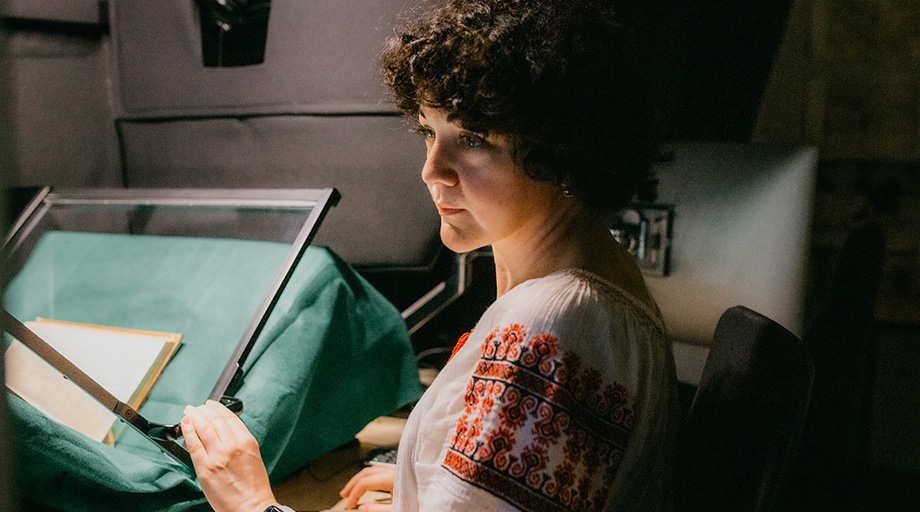
Image 4: Marina Botnaru, Digital Initiatives Assistant at UBC Library, digitizing a page of
Shakespeare’s First Folio. Courtesy of UBC Library Communications
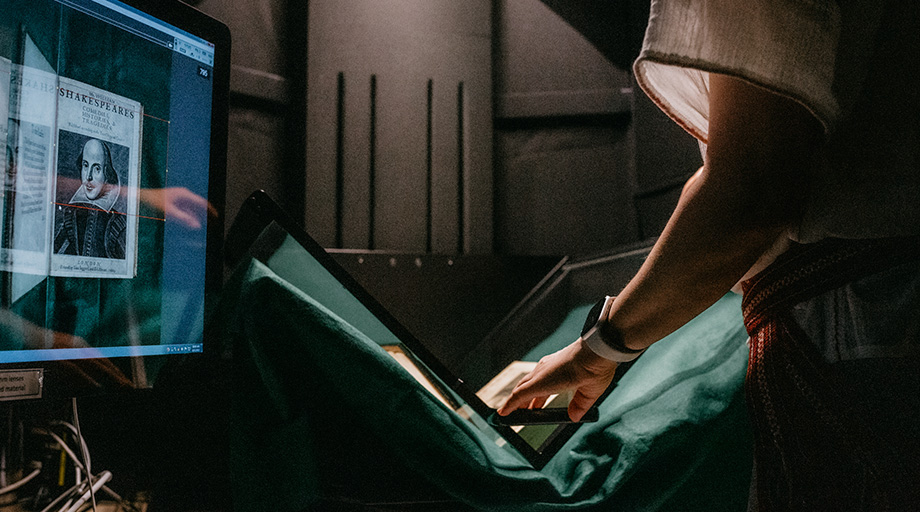
Image 5: Photo of the ATIZ workstation, with the title page of Shakespeare’s
First Folio displayed on the monitor. Courtesy of UBC Library Communications

Image 6: ATIZ workstation set-up at UBC Library – Digitization Centre.
Courtesy of UBC Library Communications
The digitization team worked together to ensure that the scanned images were as clear and accurate as possible, while also preserving the physical document by creating a “balance between maintaining an opening large enough to get a clean capture of all the text into the margins, while limiting stress on the volume’s external hinges” (Moorhouse, 2022). As a solution, the parts of the text that were not captured by the camera were recorded in the metadata of the digital images. This was significantly time-consuming due to the fact that the First Folio consisted of a total of 933 images. In addition to that, there were other considerable amounts of decisions to be made regarding guidelines on how to present all of the information in the best way possible in benefit of all potential users of the digital collections.
Historical research
To effectively handle my responsibilities, I gathered as much information as I could about UBC’s First Folio, as well as some other existing copies out there.
One of the pieces of information that I came across was that UBC Library had already possessed a First Folio back in 1960, a different copy from UBC’s current collection. It was a “permanent loan” given by Dr. Louis Wright, Director of the Folger Shakespeare Library in Washington, on the occasion of the opening of the Walter C. Koerner wing of the Main Library (Image 7). Unfortunately, in 1987, after 25 years in their possession, it was returned to its original owner. For more information, refer to the Ubyssey issue from November 3, 1960 page 3, and in UBC Library News 1987, no. 17, page 5 (Image 8).
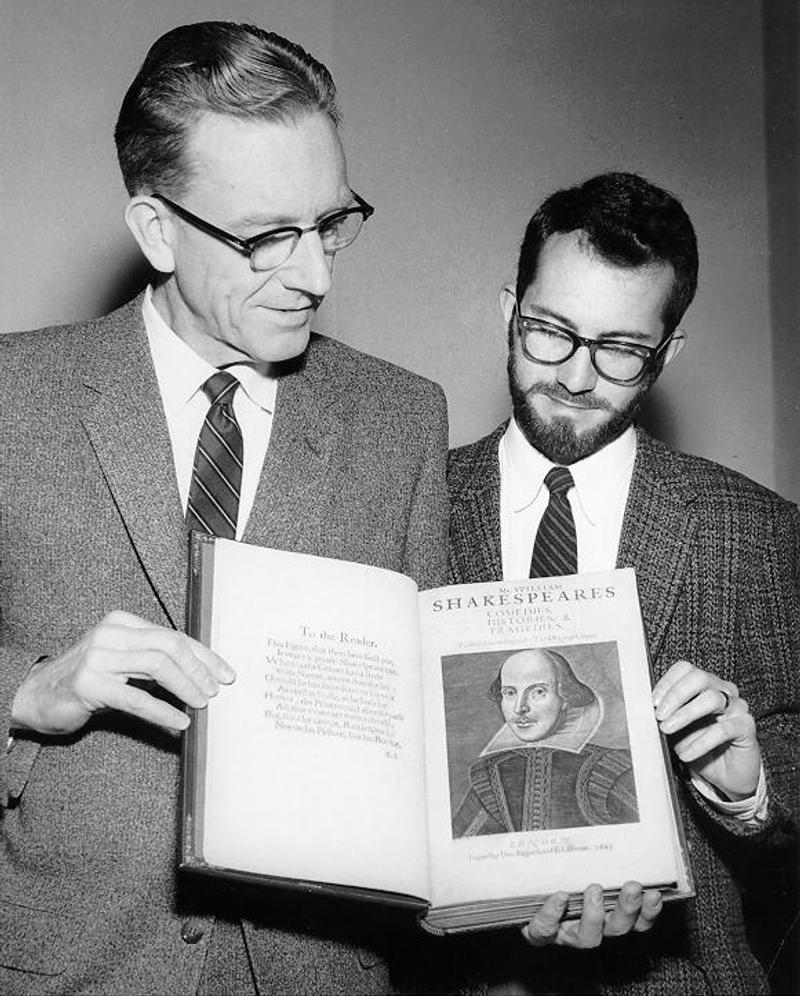
Image 7: Neal Harlow and Basil Stuart-Stubbs with Shakespeare first folios
donated by Folgers Library, 1960.
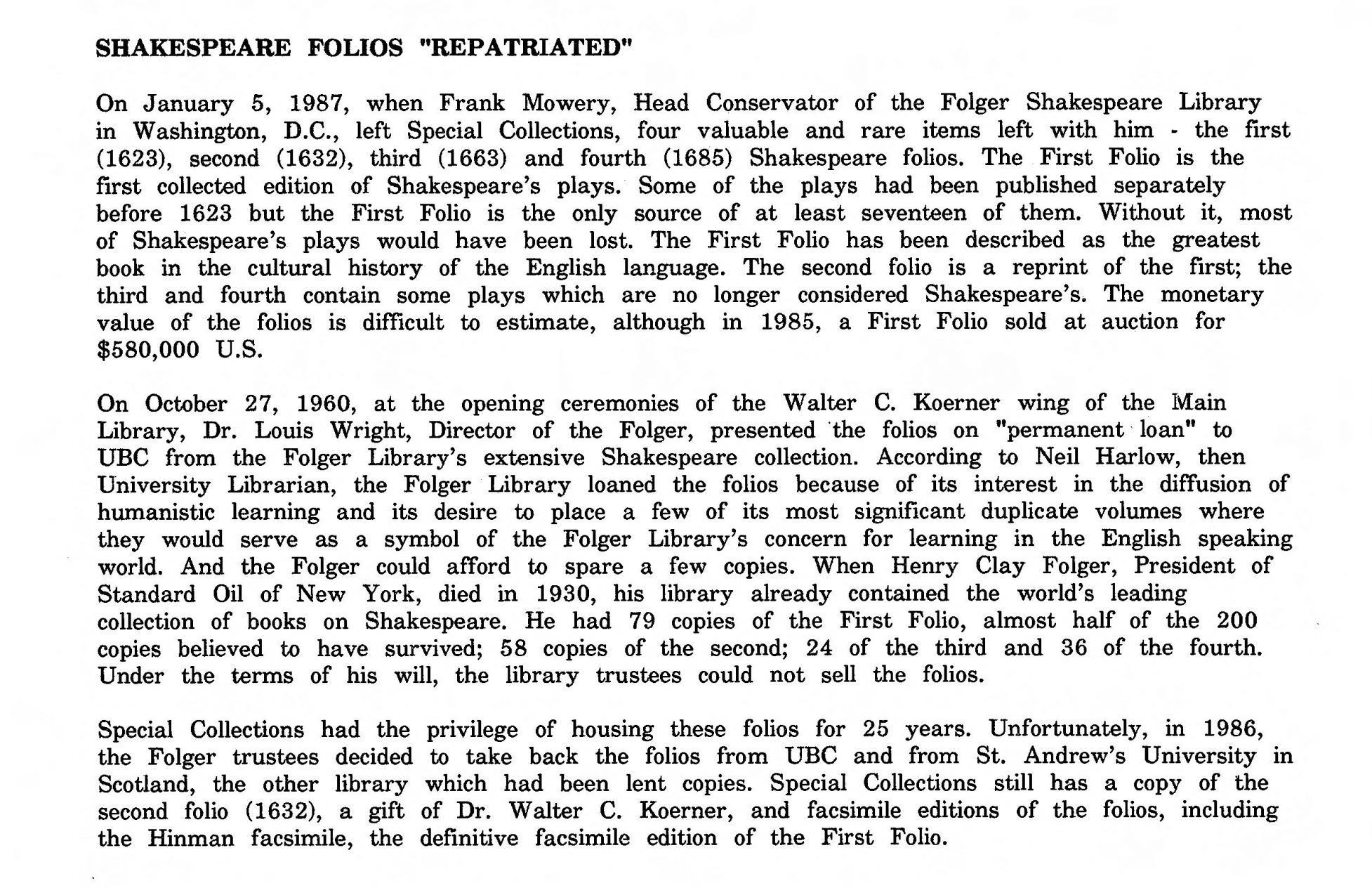
Image 8: A section from the UBC Library News, April 1987, entitled Shakespeare Folios “Repatriated”.
Additionally, I came across works such as Anthony James West’s dissertation from 1998, “A World Census Of The Shakespeare First Folio With A History Of Its Sales And Prices And A Bibliographical Model For Describing Copies” and West’s and Eric Rasmussen’s 2012, “The Shakespeare first folios”. These publications were an invaluable source of information on the provenance of UBC’s First Folio acquired in 2021, containing detailed information on its physical condition, existing errors, and annotations. It’s admirable, the dedication that these authors had in recording every tiny element, mark, or hole on the hundreds of pages. Thanks to them and several other contributors who throughout the years dedicated their time studying this copy of the First Folio, it is possible to appreciate the rich history that is attached to this single volume. All of the people who played a part in this book, from its creation to the former owners, their stories are now intertwined with the materiality of this copy of the First Folio by Shakespeare.
For example, by observing the Ex Libris, often known as a bookplate, which indicates the ownership of books it is possible to establish its provenance. In the case of the First Folio, the bookplate indicates that it belonged to the Earl of Aylesford, who resided in Packington Hall in Warwickshire (Image 9).
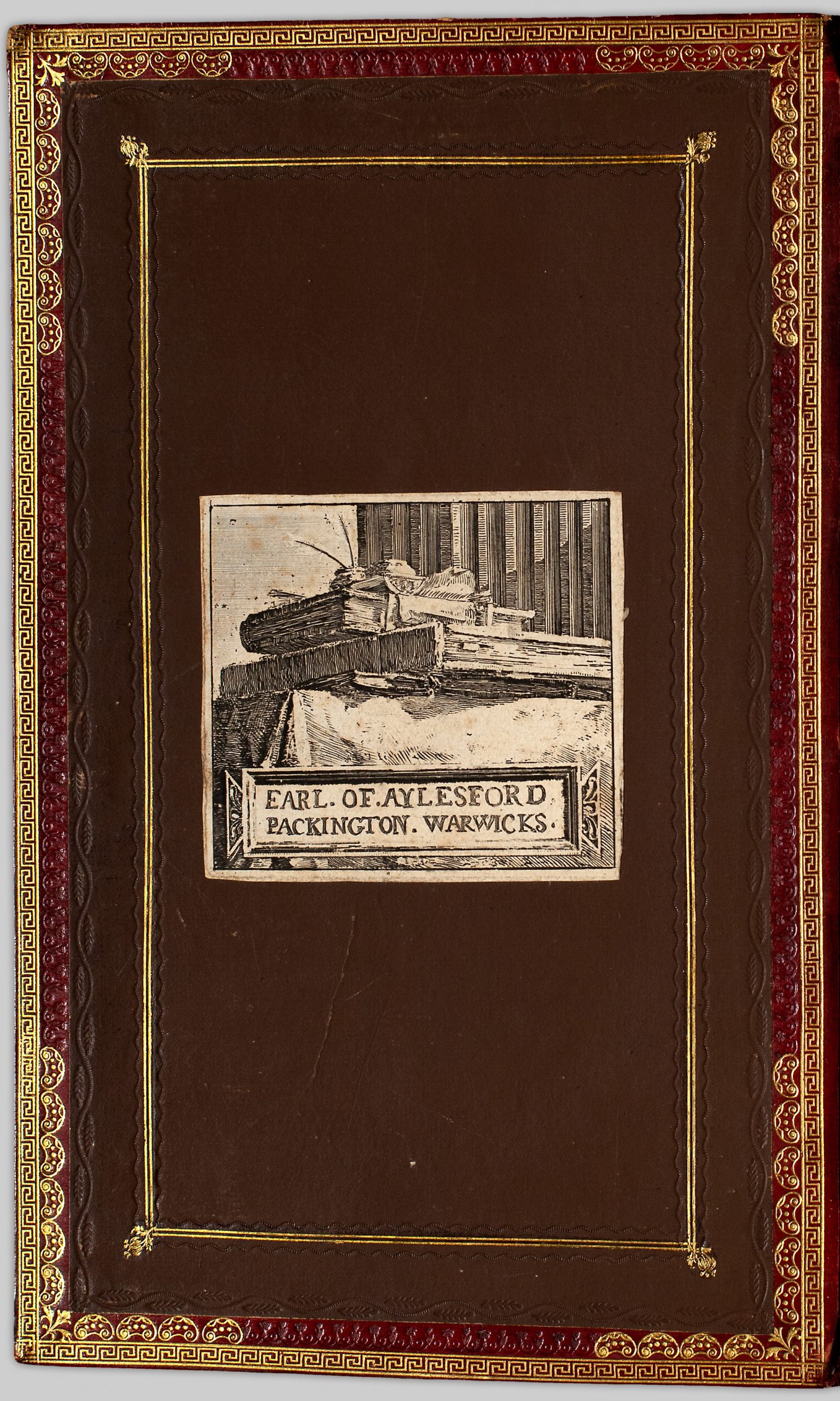
Image 9: Ex Libris (bookplate) of Shakespeare’s First Folio with information that reads,
“Earl of Aylesford, Packington, Warwickshire”.
Peculiarity of UBC’s Copy of First Folio
This First Folio is undoubtedly one of the greatest works in literature, but this edition contains a few ‘errors’ that adds a certain charm to it.
The most noticeable ones are those related to page numbering. For example, one of the plays, “Troilus and Cressida” was added after the First Folio was already assembled, so that section of the volume hardly contains any page numbers. Another example is that there are a several sections in the volume in which the page numberings do not start from ‘one’, and skips several numbers. We also noticed a typographical error on the last page, where the page number should have been 399, but instead, it reads 993 (Image 10). Considering these inconsistencies, attempting to track the digitized pages throughout the project was quite amusing, but it also revealed, at least to some extent, the history of the First Folio.

Image 10: A close-up image of the upper section of Shakespeare’s First Folio showing page 398
and the next page with a typographical error which reads “993” instead of 399.
Another peculiarity is the annotations found on some pages. They are quite amazing, featuring handwritten deletions and corrections of some verses, such as seen in Image 11. Furthermore, there are addenda that were pasted on the first pages; handwritten notes, some from the 19th and early 20th centuries; and clippings from 19th-century newspapers (Image 12) which complement the history of UBC’s copy and other copies of the First Folio.
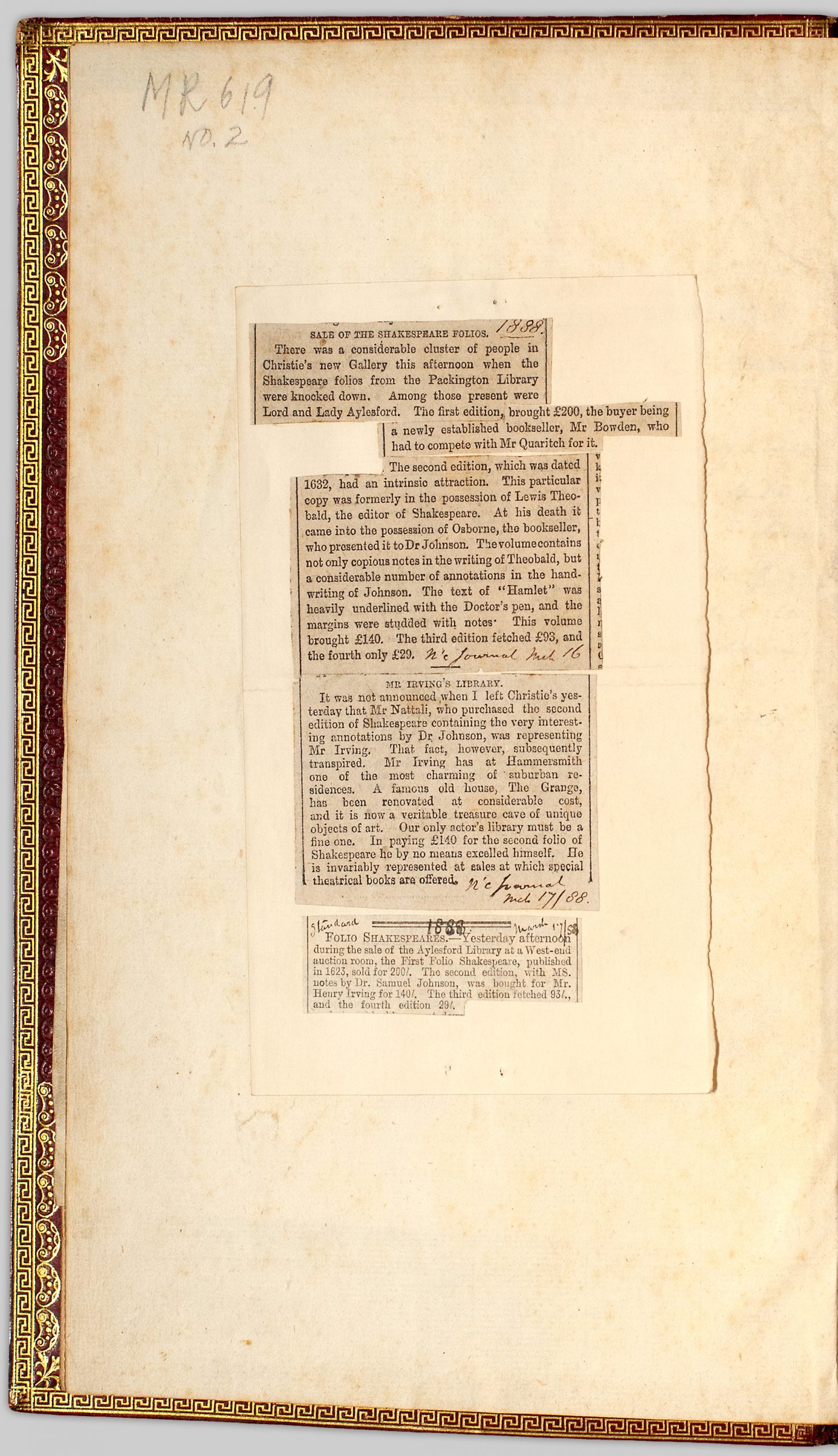
Image 12: Clippings from 19th-century newspapers that was found attached to Shakespeare’s First Folio.
Due to the limitations of the Optical Character Recognition (OCR) software, the handwritten texts (Images 13 & 14) couldn’t be transcribed accurately. To ensure that those notes would be easily discernible for viewers, I dedicated some time to transcribe them. Despite my efforts, there were some sections that were not possible to decipher, so they were left blank.
Final thoughts
One of the most valuable outcomes of this work was the opportunity I had to engage with Shakespeare’s texts. Although I have not yet had the opportunity to read the volume in its entirety, I was able to read some fragments while editing the images, while investigating the volume to answer the question “What number is this page?”, or even while transcribing and describing the annotations. My passion for languages, in particular etymology, made me deeply appreciate working with these textual records from 400 years ago.
Parting is such sweet sorrow
“Romeo and Juliet”, Act II, Scene II
Unfortunately, all good things must come to an end.
Although I wished I could have spent countless hours working on the Shakespeare First Folio Collection, I am extremely satisfied with the outcome of the project. The Digitization Centre team worked tirelessly on this collection and did everything within their means to ensure high standards of quality.
I was pleased to have been part of this immense project and I can confidently conclude that the images have been edited, the quality has been checked, the metadata has been prepared, and the transcription has been completed.
With mixed feelings of content and nostalgia, it was time to bid farewell to the Shakespeare’s First Folio and release it into the world for everyone to access, appreciate, and research.
Thank you, Natalia for sharing this story with us!
I hope you enjoyed reading this post and learning about the behind-the-scenes of The Shakespeare First Folio Collection!
To learn more about this collection, please view the links below.
Sources:
Akrigg, A. G. P. (1960, November 3). Shakespeare Folio Appraisal. The Ubyssey. https://dx.doi.org/10.14288/1.0125173
Moorhouse, A. (2022, November 21). UBC Library digitizes William Shakespeare’s First Folio. https://about.library.ubc.ca/2022/11/21/ubc-library-digitizes-william-shakespeares-first-folio/
Rasmussen, E., West, A. J., & Bailey, D. L. (2012). The Shakespeare first folios: A descriptive catalogue. Palgrave Macmillan.
UBC Library. (1987, April). Shakespeare Folios “Repatriated”. UBC Library News, no. 17. https://dx.doi.org/10.14288/1.0213349
UBC Library. (2023). Preserving UBC Library’s Shakespeare First Folio for all time. Video format. https://www.youtube.com/watch?v=jRdCdRiPKv0
UBC Library Communications. (2022, January 12). William Shakespeare’s First Folio published in 1623 gifted to UBC Library https://about.library.ubc.ca/2022/01/12/william-shakespeares-first-folio-published-in-1623-gifted-to-ubc-library/
UBC Library Open Collections: The Shakespeare First Folio. https://open.library.ubc.ca/collections/shakespe/items/1.0421801?o=0
West, A. J. (1998). A World Census of the Shakespeare First Folio with a History of its Sales and Prices and a Bibliographical Model for Describing Copies. ProQuest Dissertations Publishing.

